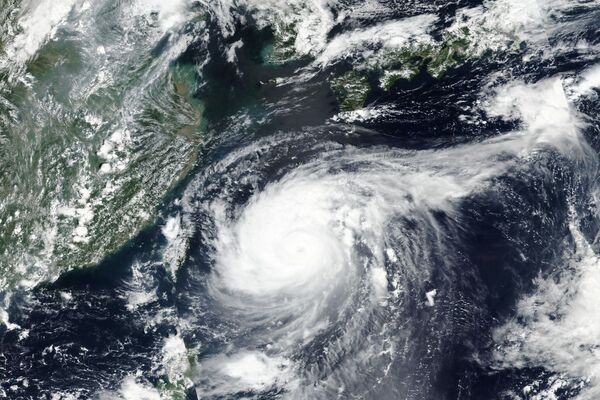"In case something happens, 22,000 members of the self-defence forces are on full alert. The self-defence forces must gather all their strength and be ready for anything", Kono said, as quoted by the NHK broadcaster.
Earlier in the day, Japan's Meteorological Agency said that the typhoon may cause high waves that can be comparable to tsunamis.

This Monday, Aug. 31, 2020, satellite image released by NASA shows Typhoon Maysak over Japan's southernmost islands, including Okinawa, center. The powerful typhoon was blowing over Japan's southernmost islands early Tuesday on course for Japan's main southern island and later the Korean Peninsula. Warnings issued for the area around Okinawa, home to U.S. military bases, said strong gusts could cause some homes to collapse and extremely high tides were a risk as well.
© AP Photo / NASA Worldview, Earth Observing System Data and Information System (EOSDIS)
Atmospheric pressure in Haishen's centre is 920 hectopascals, while its wind power is 180 kilometres (111 miles) per hour and gusts are up to 252 kilometres (156 miles) per hour. Haishen is expected to hit Japan's Kyushu island on Sunday or Monday. Nearly 100 flights in southern and southwestern Japan were cancelled on Saturday due to the approaching typhoon.


